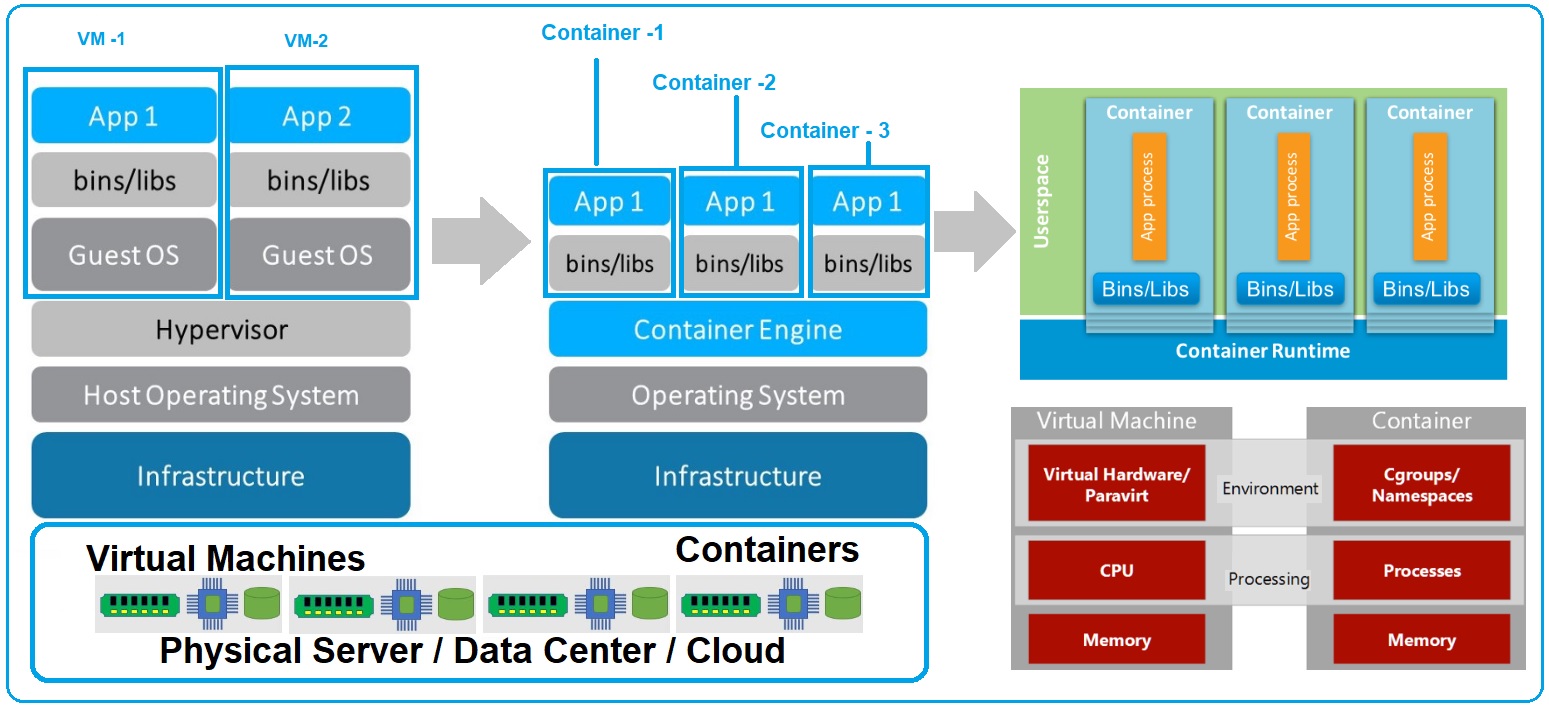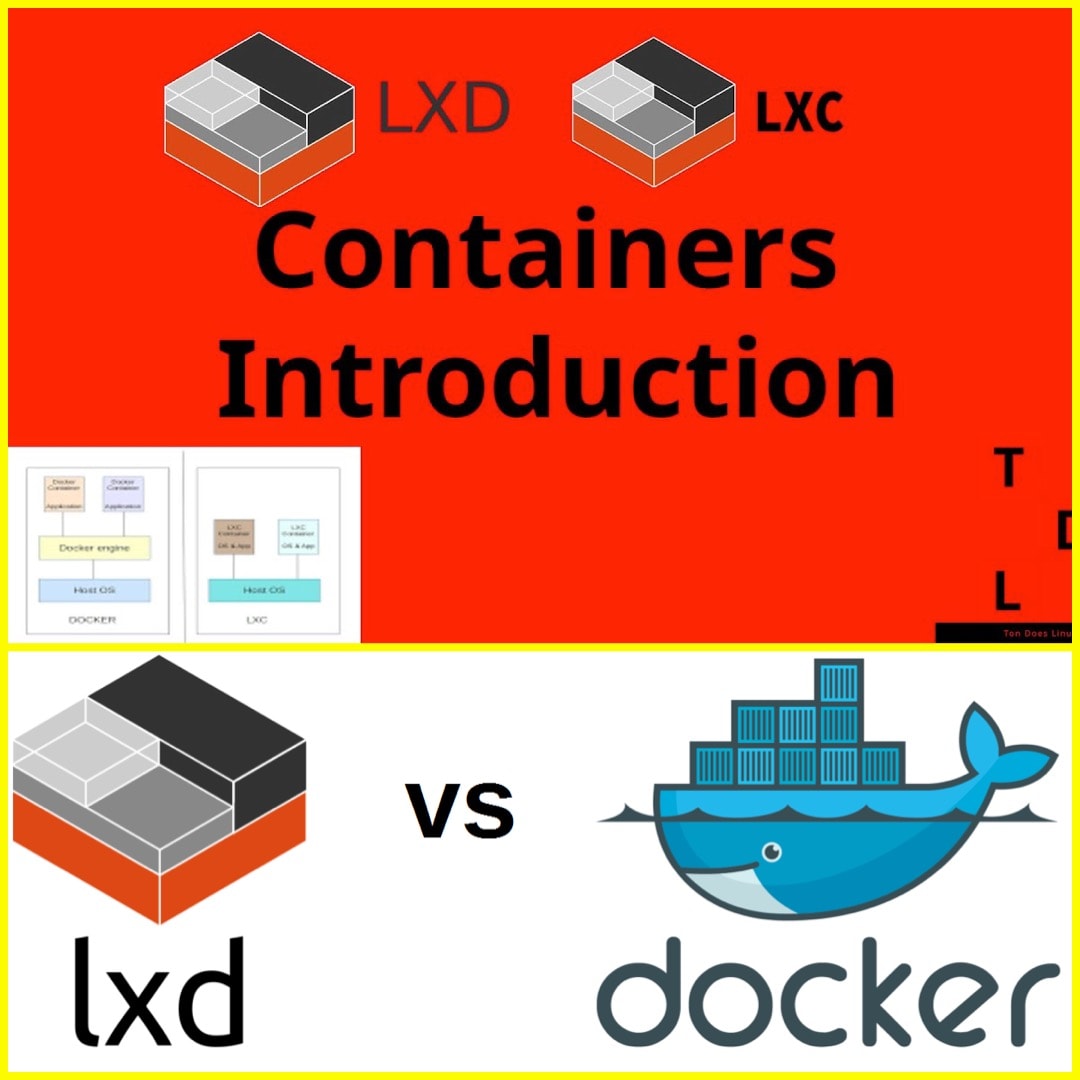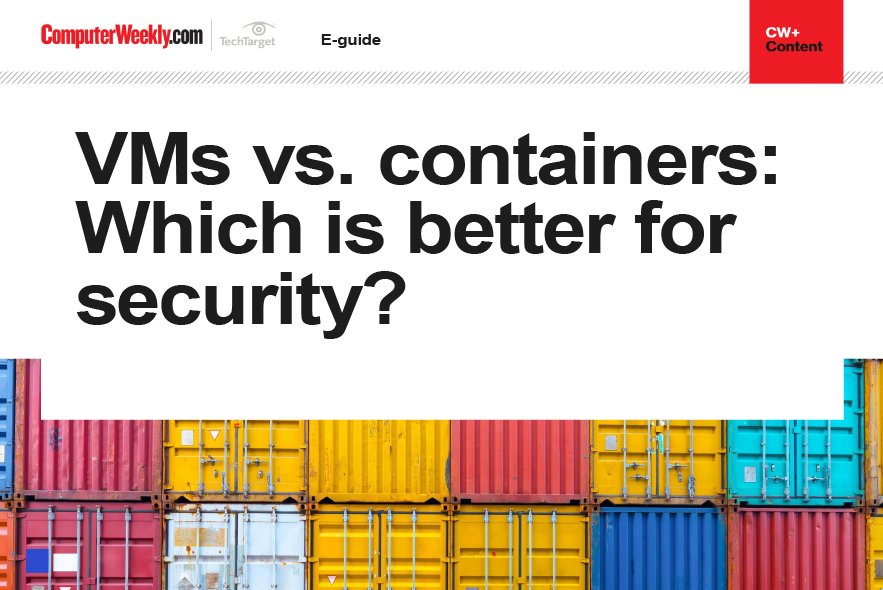Understanding Software Containers: A Modern Approach to Virtualization
Software containers are a lightweight, standalone, and executable package of software that includes everything needed to run a piece of software. This self-contained package typically includes the code, a runtime, system tools, system libraries, and settings. The key advantage of software containers is their ability to package and distribute applications in a way that is independent of the underlying infrastructure.
Software containers differ from traditional virtual machines (VMs) in several ways. While both containers and VMs virtualize computing resources, containers do so at the operating system (OS) level, rather than the hardware level. This means that containers can share the host OS and use fewer resources than VMs, making them more lightweight and faster to deploy.
One of the primary benefits of software containers is their resource efficiency. Containers use fewer system resources than VMs, allowing organizations to run more applications on the same hardware. Containers also offer improved portability, as they can be easily moved between different computing environments without requiring any modifications. This makes containers an ideal solution for modern IT infrastructure, where applications are frequently moved between on-premises, cloud, and hybrid environments.
Another significant advantage of software containers is their faster deployment times. Containers can be started and stopped in seconds, making them an ideal solution for applications that require rapid scaling. Containers also offer improved consistency, as they ensure that applications are run in the same environment, regardless of where they are deployed.
In summary, software containers are a modern approach to virtualization that offer several benefits over traditional VMs. Containers are lightweight, resource-efficient, portable, and offer faster deployment times. These advantages make containers an ideal solution for modern IT infrastructure, where applications are frequently moved between different computing environments and require rapid scaling.
Key Components of a Software Container: Images, Registries, and Orchestrators
Software containers are built on three essential components: images, registries, and orchestrators. Understanding these components and their functions is critical for successful container implementation and management.
Container Images
A container image is a lightweight, standalone, and executable package that includes everything needed to run a piece of software. This self-contained package typically includes the code, a runtime, system tools, system libraries, and settings. Container images are created once and can be used to create multiple containers, ensuring consistency and reducing the risk of configuration errors.
Container Registries
A container registry is a repository of container images that can be shared and distributed across different computing environments. Container registries allow organizations to manage and distribute container images, ensuring that the latest versions are always available. Popular container registries include Docker Hub, Google Container Registry, and Amazon Elastic Container Registry.
Container Orchestrators
A container orchestrator is a tool that automates the deployment, scaling, and management of software containers. Container orchestrators allow organizations to manage large numbers of containers across different computing environments, ensuring that they are running efficiently and effectively. Popular container orchestrators include Kubernetes, Docker Swarm, and OpenShift.
Container orchestrators provide several benefits, including improved resource utilization, faster deployment times, and improved consistency. Container orchestrators also offer features such as automatic scaling, load balancing, and rolling updates, ensuring that applications are always running at optimal levels.
In summary, software containers are built on three essential components: images, registries, and orchestrators. Container images are self-contained packages that include everything needed to run a piece of software. Container registries are repositories of container images that can be shared and distributed across different computing environments. Container orchestrators are tools that automate the deployment, scaling, and management of software containers, providing several benefits, including improved resource utilization, faster deployment times, and improved consistency.
How to Implement Software Containers: A Step-by-Step Guide
Implementing software containers can provide significant benefits for organizations, including improved resource utilization, faster deployment times, and increased consistency. However, implementing containers requires careful planning and execution. Here is a step-by-step guide for implementing software containers:
Step 1: Select the Right Containerization Technology
The first step in implementing software containers is selecting the right containerization technology. Popular containerization technologies include Docker, Kubernetes, and OpenShift. When selecting a containerization technology, consider factors such as ease of use, scalability, and security.
Step 2: Create and Manage Container Images
Once you have selected a containerization technology, the next step is to create and manage container images. Container images are self-contained packages that include everything needed to run a piece of software. Creating and managing container images requires careful planning and execution, including selecting the right base image, installing the necessary software, and configuring the environment.
Step 3: Deploy Containers in Various Environments
After creating and managing container images, the next step is to deploy containers in various environments, including on-premises, cloud, and hybrid environments. Deploying containers requires careful planning and execution, including selecting the right hosting environment, configuring the network, and managing access controls.
Step 4: Monitor and Optimize Container Performance
After deploying containers, the final step is to monitor and optimize container performance. Monitoring and optimizing container performance requires careful planning and execution, including selecting the right monitoring tools, setting up alerts, and optimizing resource utilization.
In summary, implementing software containers requires careful planning and execution. The first step is to select the right containerization technology, followed by creating and managing container images, deploying containers in various environments, and monitoring and optimizing container performance. By following these steps, organizations can realize the benefits of software containers, including improved resource utilization, faster deployment times, and increased consistency.
Best Use Cases for Software Containers: From Development to Production
Software containers have become increasingly popular in recent years due to their numerous benefits, including resource efficiency, portability, and faster deployment. Here are some real-world scenarios where software containers can provide significant value:
Continuous Integration and Delivery
Software containers are an ideal solution for continuous integration and delivery (CI/CD) pipelines. Containers allow developers to create consistent and reproducible environments for building, testing, and deploying applications. By using containers, developers can reduce the risk of configuration errors and ensure that applications run consistently across different environments.
Microservices Architectures
Software containers are also well-suited for microservices architectures. Containers allow developers to break down monolithic applications into smaller, independent components that can be developed, tested, and deployed separately. By using containers, developers can improve the scalability, resilience, and maintainability of applications.
Cloud-Native Applications
Software containers are a critical component of cloud-native applications. Containers allow developers to package applications and dependencies into a single, self-contained unit that can be easily deployed and managed in cloud environments. By using containers, developers can improve the portability, scalability, and reliability of cloud-native applications.
Successful Case Studies and Real-World Examples
Many organizations have successfully implemented software containers in various use cases. For example, Netflix uses containers to deploy and manage its microservices architecture, while Google uses containers to power its cloud services. These successful case studies demonstrate the potential benefits of software containers and provide valuable insights for organizations looking to adopt this technology.
In summary, software containers can provide significant value in various real-world scenarios, including continuous integration and delivery, microservices architectures, and cloud-native applications. By using containers, organizations can improve the resource efficiency, portability, and faster deployment of applications. Successful case studies and real-world examples demonstrate the potential benefits of software containers and provide valuable insights for organizations looking to adopt this technology.
Security Considerations for Software Containers: Risks and Mitigation Strategies
Software containers offer numerous benefits, including resource efficiency, portability, and faster deployment. However, like any technology, they also come with potential security risks. Here are some common security risks related to software containers and recommendations for mitigating these risks:
Image Vulnerabilities
Container images are the foundation of software containers. If an image contains vulnerabilities, such as outdated software or misconfigured settings, it can put the entire system at risk. To mitigate this risk, it is essential to regularly scan container images for vulnerabilities and keep them up-to-date with the latest security patches.
Network Exposure
Software containers often communicate with each other and with external systems over networks. If not properly secured, this communication can create potential attack vectors. To mitigate this risk, it is essential to implement proper network security measures, such as firewalls, access controls, and network segmentation.
Privilege Escalation
Software containers run with a specific set of privileges, which can be exploited by attackers to gain unauthorized access to the system. To mitigate this risk, it is essential to implement proper access controls, limit the privileges of container processes, and regularly monitor container activity for any signs of suspicious behavior.
Lessons Learned from Early Adopters
Early adopters of software containers have learned valuable lessons about container security. For example, Netflix has shared its experience with implementing container security in a large-scale environment, highlighting the importance of automation, continuous monitoring, and a culture of security. By learning from these experiences, organizations can avoid common pitfalls and implement effective container security measures.
In summary, software containers offer numerous benefits, but they also come with potential security risks. To mitigate these risks, it is essential to implement proper security measures, such as scanning container images for vulnerabilities, implementing network security measures, and limiting container privileges. By learning from the experiences of early adopters, organizations can avoid common pitfalls and implement effective container security measures.
The Future of Software Containers: Trends and Predictions
Software containers have revolutionized the way businesses develop, deploy, and manage applications. As container technology continues to evolve, we can expect to see new trends and predictions emerge in the coming years. Here are some of the most significant trends and predictions for the future of software containers:
Container Optimization
As container technology becomes more widespread, there will be a growing need for tools and technologies that optimize container performance. This includes tools for monitoring container health, identifying performance bottlenecks, and automating container scaling. By optimizing container performance, businesses can reduce costs, improve reliability, and enhance the overall user experience.
Serverless Computing
Serverless computing is an emerging trend that enables businesses to build and deploy applications without managing servers or infrastructure. Serverless computing is often built on top of container technology, enabling businesses to create highly scalable and flexible applications. As serverless computing continues to grow in popularity, we can expect to see more businesses adopt container technology as the foundation for their serverless applications.
Edge Computing
Edge computing is a distributed computing paradigm that brings computation and data storage closer to the location where it is needed. Container technology is well-suited for edge computing, enabling businesses to deploy containers on edge devices such as IoT devices, gateways, and edge servers. By deploying containers on edge devices, businesses can reduce latency, improve performance, and enhance the overall user experience.
Implications for Businesses and Developers
The future of software containers will have significant implications for businesses and developers. For businesses, container technology offers the potential to reduce costs, improve reliability, and enhance the overall user experience. For developers, container technology offers the ability to build highly portable, scalable, and flexible applications. As container technology continues to evolve, businesses and developers will need to stay up-to-date with the latest trends and best practices to remain competitive in the marketplace.
In summary, the future of software containers is bright, with new trends and predictions emerging in the coming years. Container optimization, serverless computing, and edge computing are just a few of the most significant trends and predictions for the future of software containers. By staying up-to-date with the latest trends and best practices, businesses and developers can leverage container technology to build highly scalable, flexible, and reliable applications.
Choosing the Right Software Container Solution: A Comparative Analysis
With the growing popularity of software containers, businesses and developers have a wide range of container solutions to choose from. Each solution offers unique features, performance, and ease of use. In this article, we will compare three popular container solutions – Docker, Kubernetes, and OpenShift – to help you select the best solution for your specific use case and business needs.
Docker
Docker is a leading containerization platform that enables businesses and developers to build, ship, and run applications in containers. Docker offers a wide range of features, including a lightweight runtime, a powerful image management system, and a user-friendly interface. Docker is an excellent choice for businesses and developers looking for a simple and efficient container solution.
Kubernetes
Kubernetes is an open-source container orchestration platform that automates the deployment, scaling, and management of containerized applications. Kubernetes offers advanced features, such as automatic scaling, self-healing, and rolling updates, making it an ideal choice for businesses and developers looking for a highly scalable and resilient container solution.
OpenShift
OpenShift is a container application platform that combines the power of Docker and Kubernetes with additional features, such as built-in image registries, automated builds, and integrated security. OpenShift is an excellent choice for businesses and developers looking for a comprehensive container solution that offers enterprise-grade features and support.
Comparing Features, Performance, and Ease of Use
When comparing Docker, Kubernetes, and OpenShift, it’s essential to consider factors such as features, performance, and ease of use. Docker offers a simple and efficient container solution, while Kubernetes provides advanced features for highly scalable and resilient applications. OpenShift combines the power of Docker and Kubernetes with additional features, making it a comprehensive container solution for enterprises.
When it comes to performance, all three solutions offer excellent performance and reliability. However, Kubernetes and OpenShift offer advanced features, such as automatic scaling and self-healing, that can help businesses and developers achieve higher levels of performance and reliability.
Ease of use is another critical factor to consider when choosing a container solution. Docker offers a user-friendly interface and simple commands, making it an excellent choice for businesses and developers who are new to containerization. Kubernetes and OpenShift offer more advanced features, which can be more challenging to learn and use, but also provide more control and customization options.
In summary, when choosing a software container solution, it’s essential to consider factors such as features, performance, and ease of use. Docker, Kubernetes, and OpenShift are three popular container solutions that offer unique features, performance, and ease of use. By comparing these solutions, businesses and developers can select the best solution for their specific use case and business needs.
Overcoming Challenges in Software Container Adoption: Best Practices and Lessons Learned
Software containers have become increasingly popular in recent years, offering numerous benefits such as resource efficiency, portability, and faster deployment. However, adopting software containers can also present challenges, such as security concerns, complex management, and integration issues. In this article, we will discuss common challenges in software container adoption and provide best practices for overcoming these challenges. We will also share lessons learned from early adopters and offer recommendations for successful container implementation and management.
Security Concerns
Security is a significant concern when adopting software containers. Common security risks include image vulnerabilities, network exposure, and privilege escalation. To mitigate these risks, it’s essential to implement security best practices such as scanning container images for vulnerabilities, limiting network exposure, and managing container privileges. It’s also important to keep container engines and orchestrators up-to-date with the latest security patches.
Complex Management
Managing software containers can be complex, especially as the number of containers grows. To simplify management, it’s essential to implement container orchestration tools such as Kubernetes, Docker Swarm, or OpenShift. These tools can automate tasks such as container deployment, scaling, and networking, making it easier to manage large numbers of containers.
Integration Issues
Integrating software containers with existing IT infrastructure can be challenging. To overcome integration issues, it’s essential to plan for integration from the beginning, identifying potential integration points and developing a strategy for integration. It’s also important to work with experienced container vendors and service providers who can provide guidance and support for integration.
Lessons Learned from Early Adopters
Early adopters of software containers have learned valuable lessons that can help businesses and developers successfully adopt containers. For example, Netflix, a leading provider of streaming services, has shared its experience with container adoption, highlighting the importance of automation, monitoring, and resiliency. By learning from these experiences, businesses and developers can avoid common pitfalls and implement containers more successfully.
Best Practices for Successful Container Implementation and Management
To successfully implement and manage software containers, it’s essential to follow best practices such as implementing security best practices, simplifying management with container orchestration tools, planning for integration, and learning from early adopters. It’s also important to work with experienced container vendors and service providers who can provide guidance and support for container implementation and management.
In summary, adopting software containers can present challenges, such as security concerns, complex management, and integration issues. However, by following best practices and learning from early adopters, businesses and developers can successfully implement and manage containers, reaping the benefits of resource efficiency, portability, and faster deployment.






